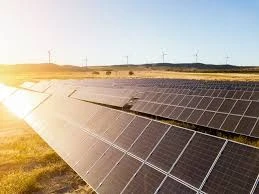solar inverter operation
Understanding Solar Inverter Operation
Solar inverters play a crucial role in converting the direct current (DC) generated by solar panels into alternating current (AC), which can be used by household appliances and fed into the electrical grid. Understanding how these devices operate is essential for anyone looking to harness solar energy efficiently.
Types of Solar Inverters
There are mainly three types of solar inverters string inverters, microinverters, and power optimizers.
1. String Inverters These are the most common type of solar inverter used in residential solar systems. In a string inverter setup, multiple solar panels are connected in series or strings. The inverter converts the collective DC output of the panels into AC. The disadvantage of string inverters is that if one panel in the string underperforms due to shade or dirt, it can reduce the output of the entire string.
2. Microinverters These devices are installed on each individual solar panel. This allows for independent operation of each panel, which means that shading or malfunction in one panel does not affect the performance of the others. Microinverters can maximize energy production, especially in installations where panels may face varying amounts of sunlight.
3. Power Optimizers A hybrid solution, power optimizers are similar to microinverters but work differently. They are installed on each panel to optimize the DC output before sending it to a central inverter, which then converts the optimized output into AC. This setup combines the benefits of string inverters and microinverters.
Key Functions of Solar Inverters
The primary function of any solar inverter is to convert DC to AC. However, modern inverters perform several additional essential functions
solar inverter operation

1. Maximum Power Point Tracking (MPPT) Solar radiation levels can fluctuate throughout the day based on weather conditions and the angle of the sun. MPPT technology allows inverters to continuously adjust the electrical load to ensure the solar panels operate at their maximum efficiency, optimizing energy production.
2. Grid Regulation Inverters play a crucial role in maintaining grid stability. They monitor grid conditions and can automatically disconnect from the grid if there are significant fluctuations, protecting both the system and the electrical grid.
3. Safety Features Safety is a top priority for solar inverter technology. Inverters are equipped with circuit protection and can shut down automatically in case of a malfunction or lightning strike, providing essential safety measures for both the solar system and the home.
4. Monitoring Capabilities Many modern solar inverters come equipped with monitoring capabilities that allow owners to track their energy production and consumption. This data can be accessed via smartphone apps or web platforms, providing a clear overview of system performance.
Installation and Maintenance
The installation of solar inverters should be performed by qualified professionals, as incorrect installation can lead to inefficiencies or safety risks. Regular maintenance is also necessary to ensure optimal performance. This may include checking electrical connections, cleaning the inverter's cooling vents, and ensuring the system software is up to date to benefit from any improvements or updates.
Future Developments
As technology advances, solar inverters are becoming more efficient and intelligent. Innovations such as smart inverters are emerging, which not only perform traditional inverter functions but also facilitate communication with the energy grid and integrate with home energy management systems.
In conclusion, solar inverters are a vital component of solar energy systems, transforming DC electricity into usable AC while optimizing performance and ensuring safety. Whether you choose a string inverter, microinverter, or power optimizer, understanding their operations can help maximize the efficiency of your solar energy investment. As the renewable energy sector continues to grow, advancements in inverter technology will likely pave the way for even greater efficiency and integration into modern electrical systems.
-
Unlocking Energy Freedom with the Off Grid Solar InverterNewsJun.06,2025
-
Unlock More Solar Power with a High-Efficiency Bifacial Solar PanelNewsJun.06,2025
-
Power Your Future with High-Efficiency Monocrystalline Solar PanelsNewsJun.06,2025
-
Next-Gen Solar Power Starts with Micro Solar InvertersNewsJun.06,2025
-
Harnessing Peak Efficiency with the On Grid Solar InverterNewsJun.06,2025
-
Discover Unmatched Efficiency with the Latest String Solar InverterNewsJun.06,2025







